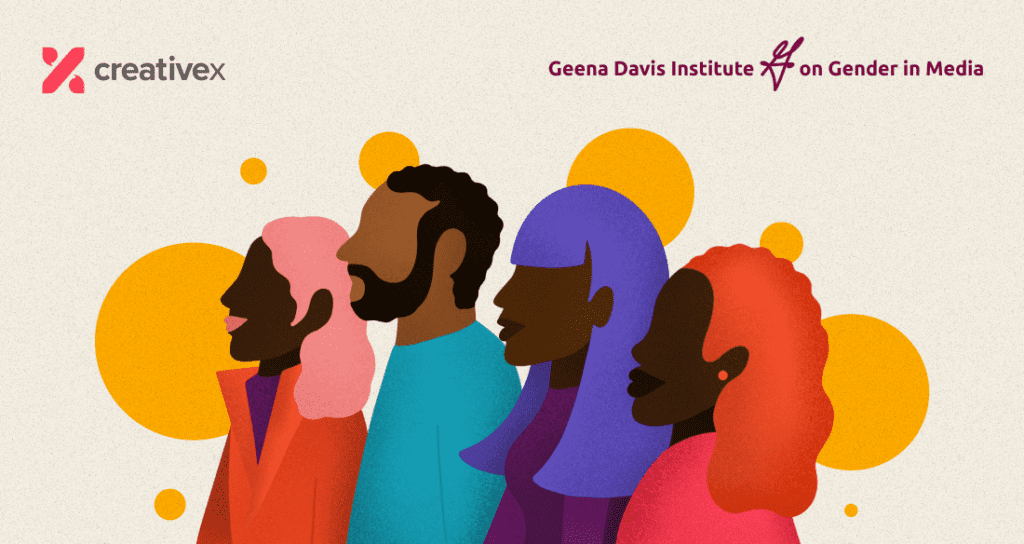Many brands have made commitments to do better in how they portray BIPOC and women in their advertising messages.
To equip advertisers with the technology they need to measure how often women and BIPOC are depicted in their ads, and in what context, the creative analytics company CreativeX collaborated with the Geena Davis Institute on Gender in Media to build a product they dubbed Representation.
The AI-powered software solution analyzes the characters and settings shown in ads (e.g., a dark-skinned person in a professional setting or woman in a domestic setting), providing brands with concrete data they can use to act on their diversity, equity and inclusion (DEI) commitments.
The goal is to make DEI initiatives measurable at scale. The AI tool enables brands to take an honest assessment of the current state of their ad messages by uncovering bias in a brand’s ad creative and finding places where brands can improve their representation.
The Representation tool also alerts brands if they unwittingly introduced stereotypical depictions of these groups into their ad messages as a result of their good faith attempts to feature these groups more often.
CreativeX’s Representation software is trained to identify characters in ads according to gender, skin tone and age group. It is also trained to identify the setting of an ad message and to classify the context of the ad as taking place in a professional setting (emphasizing work achievements), a domestic setting (depicting housework), a family setting (showing caretaker-type roles) or a physical setting (highlighting physical activity). CreativeX plans to further distinguish between white-collar professional settings and blue-collar or service-oriented professional settings in its samples going forward.
Since the Representation platform was rolled out to some of CreativeX’s partners in June of last year, it has been used to analyze more than 3,500 consumer packaged goods (CPG), beauty and alcohol ad messages deployed in the US between mid-2020 and mid-2021.
Brands start with an initial audit that benchmarks where they are today, said Anastasia Leng, founder and CEO of CreativeX. “Once they understand how representative they are and where they might be perpetuating certain stereotypes that they’re not aware of, they then make active content plans where they get their agencies on board to address and to improve [their messaging].”
In the initial sample of 3,500+ ads analyzed by the Representation software, women were depicted in 55% of ads, but men were 1.5 times more likely to be shown in professional settings. People with lighter skin tones were shown in professional environments twice as often as those with darker skin tones. And characters with darker skin were overrepresented in physical settings.
Also, despite people over the age of 60 representing the largest share of disposable income in the US market, only 1% of ads depicted characters of that age group. Playing into stereotypes about older people, less than 2% of these ads took place in a physical setting.
While many brands have prioritized DEI in advertising because they believe it is the right thing to do, there is also a business incentive for them to depict more diversity and foster more equity in their advertising messages.
Research has shown that brands that run more diverse, less stereotypical ads attract a more diverse audience, and there is a demonstrable impact on the effectiveness of their ad messages.
For example, a study published by Kantar in April 2021 found that CPG ads with a high “Unstereotype Metric” saw a 20% increase in short-term sales impact among men and women. And a November 2019 Deloitte Digital study analyzing TV ads from the top 50 media spenders in the US found that, over the preceding two-year period, brands that featured diverse ad content saw an average 15% increase in consumer perception and a 7% increase in stock price.
As brands tackle DEI in multiple arenas, from reevaluating their creative process on an organizational level to increasing representation at the decision-making level to analyzing their supply chain, they should also look at implementing technological solutions that are scalable and applicable across a brand’s many different campaigns and platforms, said Madeline Di Nonno, president and CEO at the Geena Davis Institute for Gender in Media.
“It really has to be embedded into the process, so [it] doesn’t slow down the creation and the distribution [of content]. And it has to be turnkey in order for this change to be systemic,” Di Nonno said.















